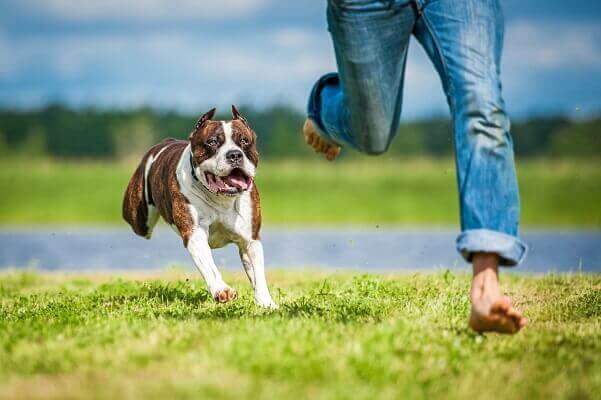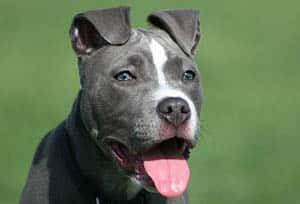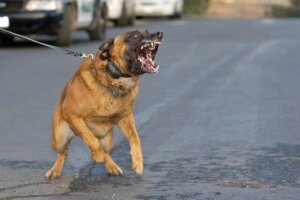You know of the dangerous dog breeds out there, and some cities have even placed bans on owning certain breeds.
These breed-specific laws are designed to restrict ownership of any dog breed prone to severe attacks. Common breeds on the list include the Pit Bull as well as Rottweilers. Other large breeds become members of the list, depending on the number of attacks seen by that city.
One important thing to note, however, is that the American Kennel Club has repeatedly released statements that not all Pit Bulls are aggressive, nor should they be a breed banned from ownership. Also, they recognize that Pit Bull itself is not a breed, but a mix. Therefore, the propensity for attacks requires considering the breeds used to create the Pit Bull itself.
So, for the parent looking for a dog for their child or for the owner worried their dog is a high risk for attacks, does the breed determine the likelihood of a vicious dog attack?
In reality, the breed is not the sole determinant. Many owners of Pit Bulls and Rottweilers have had their family pet for years and never encountered a single act of violence. Other times, breeds not banned or labeled “dangerous” have been the subject of a vicious attack. Therefore, it comes down to more than just the breed designation.
What Are Considered Dangerous Dog Breeds in Philadelphia?
Right now, the list of “dangerous dog” breeds are mostly bigger breeds or those with enough jaw force to cause significant harm. Most of these dogs are associated with fighting and other vicious training, such as police dogs, guard dogs, and illegal fight dogs.
The fourteen breeds considered “dangerous” include:
- Pit Bull Terriers
- Staffordshire Terriers
- Rottweilers
- German Shepherds
- Chow Chows
- Doberman Pinschers
- Akitas
- Any Wolf-Hybrid Dog
- Great Danes
- Siberian Huskies
- Alaskan Malamutes
- Presa Canario
- Mastiffs
- Cane Corsos
You might own one of these breeds now, or know someone that does, and never seen an ounce of violent behavior. To truly understand the risk of a dog attack, you must first understand why dogs attack and also accept the fact that breed only plays a minor role in determining the risks.
Why Dangerous Dogs Attack – and How It Can Be Prevented
Most dog attack cases involve someone jogging or cycling by, and the dog comes out of nowhere to viciously attack. This is because the person in motion has triggered a dog’s instinct to chase prey. Some breeds have a stronger instinct, including those in the “dangerous” category. Basically, they see something running; they want to attack it.
Furthermore, dogs are territorial – with some being more so than others. They see someone jogging by his or her property, and they will automatically want to defend it. Usually, a dog barks to warn you that you are on their property and to leave. When you keep running by, they stop barking because they did their duty. However, the excitement of driving away a threat can turn a dog more vicious. The more excited and frequently excited a dog becomes, the more likely they are to become bolder with how they drive away people on their territory – including attacking them.
The Factors That Influence a Dog’s Preponderance for Attacks
So, why do dogs attack? Breed or not, there are other influences on whether or not a dog will attack someone:
- Age – Older dogs might strike out of aggression, pain, irritation. Younger puppies might bite because they have not yet learned proper play.
- Socialization – When dogs are not properly socialized, they become anxious and wary of people they do not know. When dogs are anxious, they may become threatened and instincts take over, telling them to attack.
- Feeling threatened – Dogs will not attack without provocation. But when they feel threatened or their pack (family) is threatened, they may attack.
- Vicious training – It is not the breed; it is the training. When an owner purposely trains their dog to be aggressive, that dog is more likely to give in to the desire to chase and attack someone.
- Illness – Dogs that are sick, injured, or not feeling well are more likely to bite even when they have naturally gentle personalities.
- Maternal aggression – A dog that has recently had a litter is more aggressive toward those who are threatening her puppies.
- Anxiety disorders – Just like humans, dogs can have anxiety disorders, too. Only these anxiety disorders make them more excited and agitated in situations where they would typically not be agitated.
What Are My Rights If a Dangerous Dog Has Harmed Me?
If you, your child, or a loved one was viciously attacked by a dog (regardless of breed), you have the right to hold the owner responsible for your injuries. It is vital that you first seek medical help right away and report the attack to the authorities. You can call your local precinct or animal control. Even if you do not know the dog’s owner, report the attack and describe the dog so that authorities can locate and detain the animal.
Then, speak with an attorney that has experience handling dog attack cases. Attorney Jeffrey H. Penneys, Esq. is an advocate for those who have been violently attacked by dogs. The trauma and long-term medical care needed for these types of attacks are not something victims should pay for. Instead, he works tirelessly to secure compensation for medical costs, pain, suffering, lost wages, and more.
To get started, schedule a free case evaluation with him by calling 800-465-8795 (office), 215-771-0430 (cell), or by filling out an online contact form.
All consultations are confidential, and there is no fee unless you recover compensation in your case.







